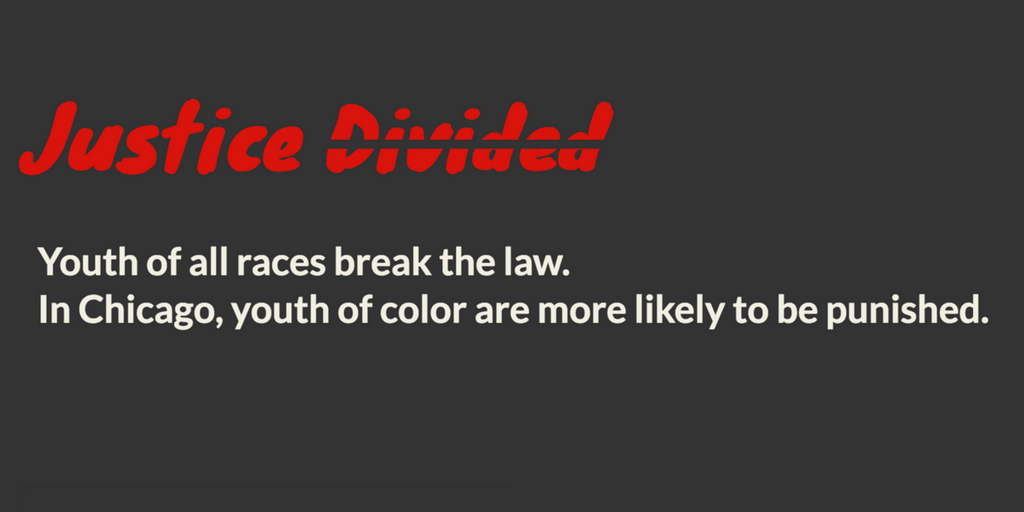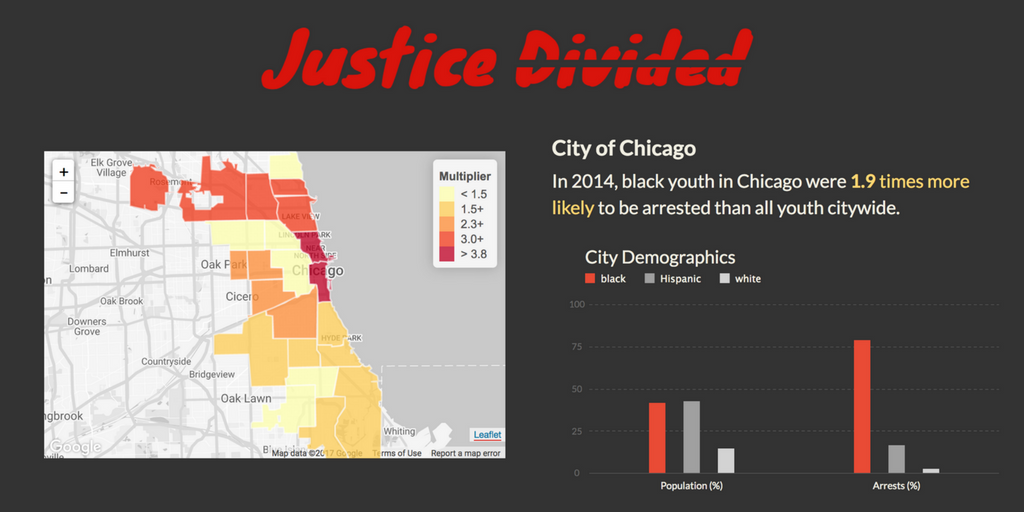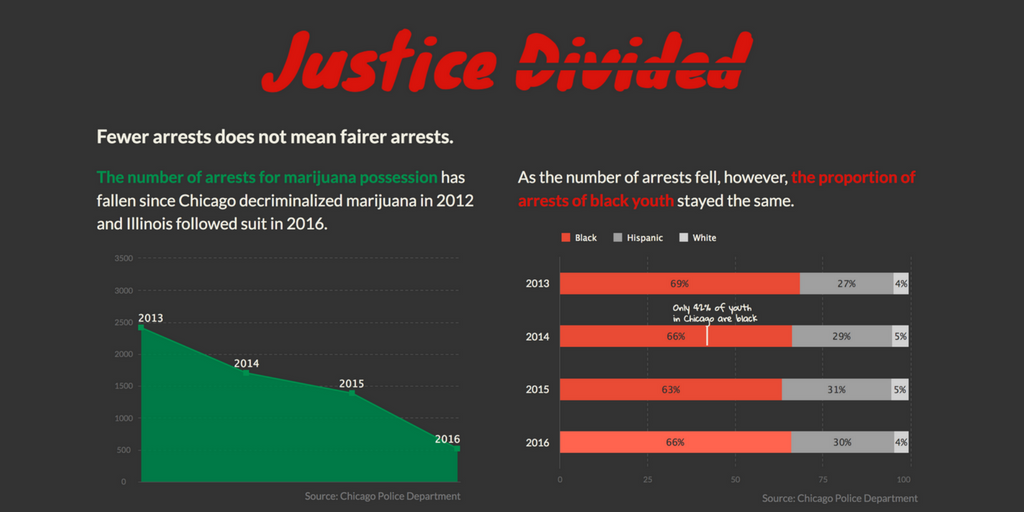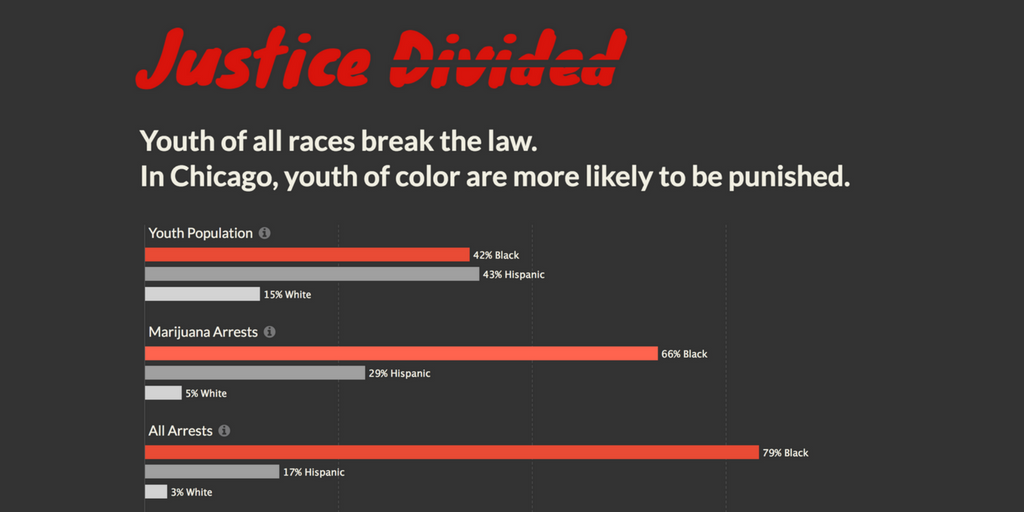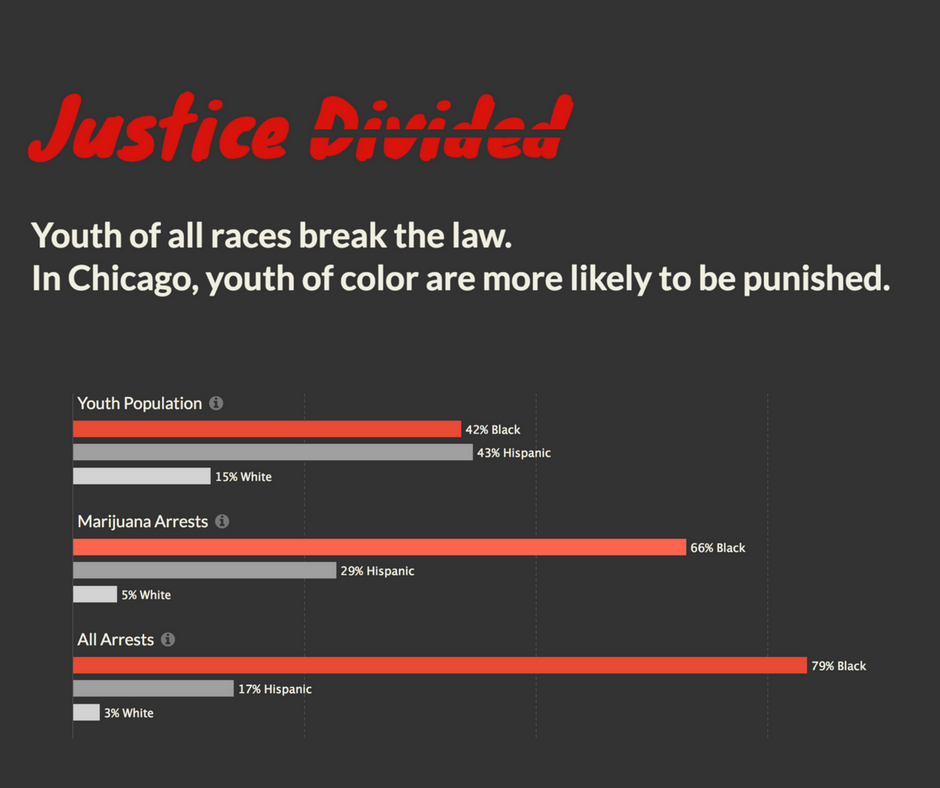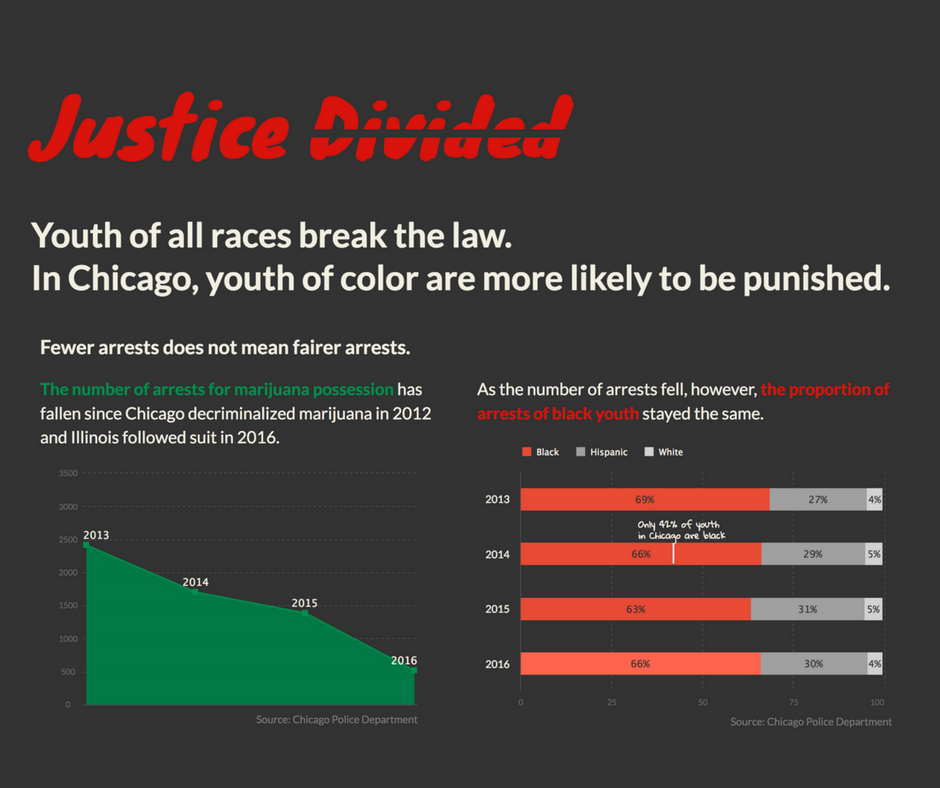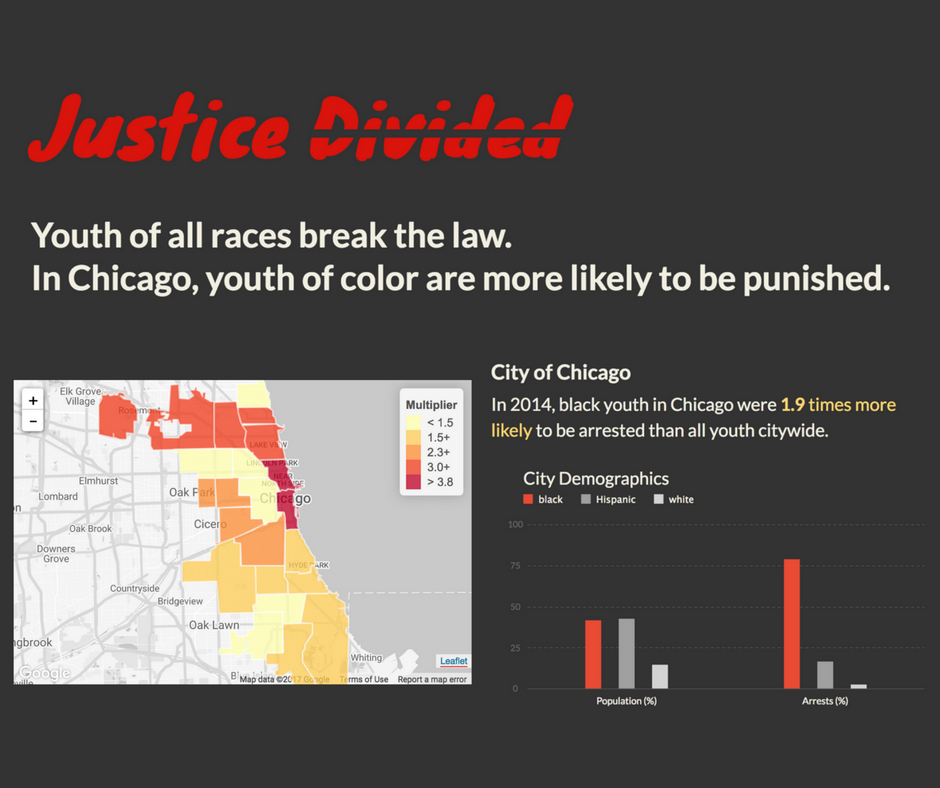Take action!
What can I do?
Raise awareness.
Use the hashtag #NotJusticeWhen to talk about your experience with the juvenile justice system.
Share this website, and encourage your friends to do the same.
Twitter images (click to tweet)
Facebook images
Get involved.
Volunteer in your community by joining a youth council, working to create a healthy space for justice-involved youth, or mentoring your peers.
Demand change.
Contact your local, state and national government representatives to demand that they support policy initiatives that will make the justice system equitable for everyone.
Don’t know who your representatives are? Find them here.
What can I say to my representatives?
- It costs Illinois taxpayers approximately 10 times more to imprison someone in the Department of Juvenile Justice than it does to educate them in the Chicago Public School system.
- Youth who are removed from school are three times more likely to make contact with the justice system. Black students in Chicago Public Schools are punished with suspension, expulsion, and arrest more than other students. CPS officials should receive training on bias, the impact bias has on youth of color, and alternatives to removing a student from school.
- Over half of Illinois youth who are imprisoned return to prison within three years. Invest in rehabilitative services that keep youth in their own communities, rather than punitive measures, such as prisons. Ensure access to rehabilitation for all youth, regardless of race, age, sex, sexual orientation, or place of residence.
What can we do?
Take joint responsibility.
Focus intentionally on reducing racial disparities (not just on general system improvement) without placing blame on particular system stakeholders. Encourage local and state leaders to make DMC reduction a long-term priority.
Work together.
Affiliate with national juvenile justice reform initiatives to learn best practices that can be applied in their local jurisdiction. Increase collaboration across police, courts, and the community to minimize the number of youth who are incarcerated.
Change the conversation.
Move away from a punitive culture to one that focuses on what’s best for the youth and community by creating and investing in alternatives to secure detention and confinement, and formal system involvement.
What can policy makers do?
Call it what it is.
To reduce inequality in the juvenile justice system, policy makers should explicitly address the issue of race and raise awareness of implicit bias in themselves and in the justice system.
Invest in rehabilitation.
Funding (both public and private) should be invested in rehabilitative treatment that keeps kids in their own communities, not in traditional measures like youth prisons that punish them with removal.
Alternatives to traditional punishment should focus helping youth to achieve positive outcomes that will enable them to become law-abiding adults.
Measures should be taken to ensure access to these services for all youth, regardless of their race, age, sex, sexual orientation, or place of residence.
Promote system-wide awareness.
Law enforcement officers and others in the justice system should receive training that will raise their awareness of implicit bias and the impact it has on youth of color. They should also be informed about available alternatives to arrest and empowered to use them.
